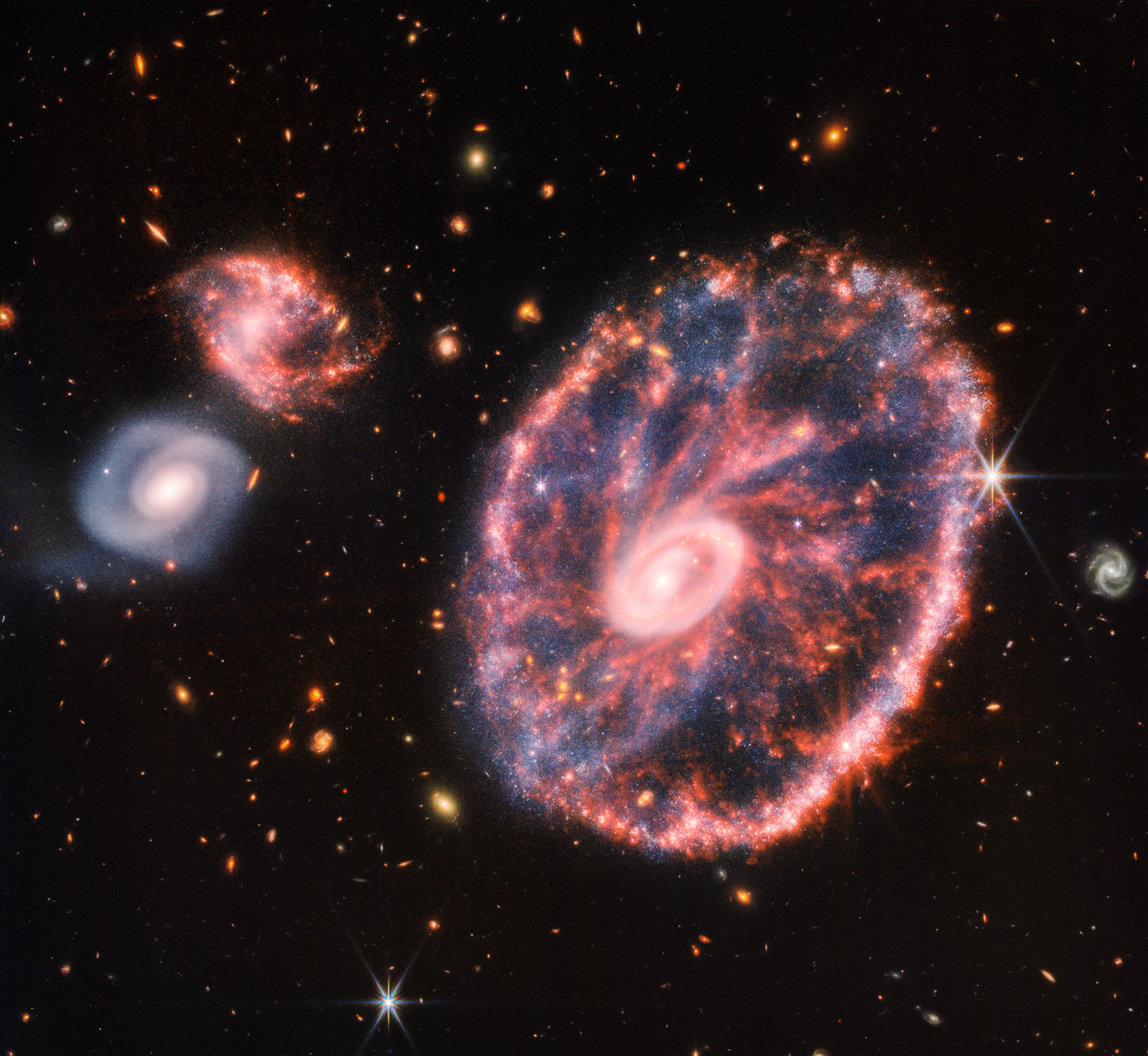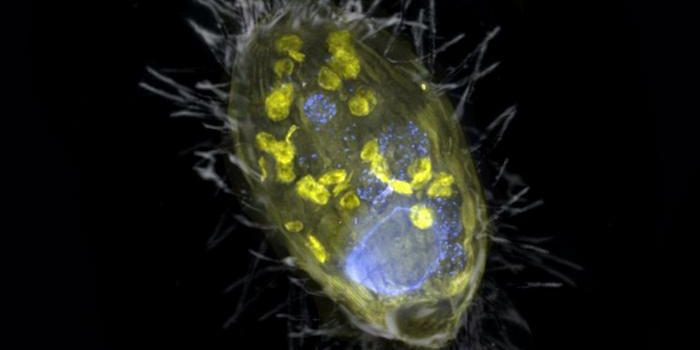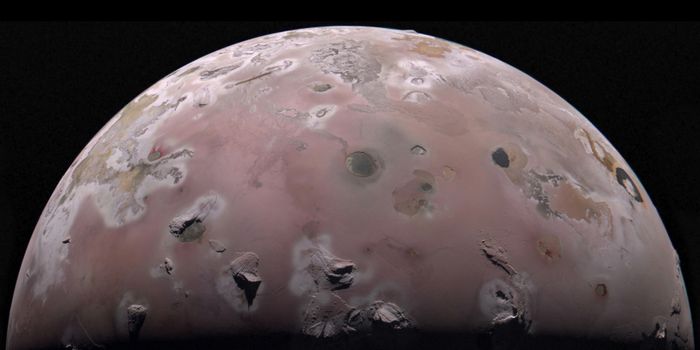JWST Captures the Cartwheel Galaxy in Detail
On December 25, 2021, the most expensive telescope, James Webb Space Telescope (JWST) ever built was launched into space, traveled a few million miles away from the Earth, and settled at a Lagrange point between the Earth and the Sun in January 2022. After a few initial tests, it started examining space and collecting images, some of which were released to the public on July 11, 2022. It is famously known as the successor of the famous Hubble Space telescope which gave us a beautiful view of our cosmos. JWST is 6.5m as compared to the Hubble which is just 2.4 m wide. JWST is also designed to look at the infrared sky which means looking for objects from the early universe as well as faint objects in the sky. JWST’s planning started in 1996 and it was completed by collaboration between NASA, ESA (European Space Agency) and the Canadian Space Agency.
The Near-Infrared Camera (NIRCam) is an imager which can see more stars and matter than we can see in visible light (or via Hubble). This is because the infrared light can reveal young stars which are otherwise not seen in visible light due to the presence of dust around them. Our normal vision cannot see through it. This camera recently imaged a very famous galaxy called Cartwheel galaxy in great detail. The image displayed below shows dense dust near the center as compared to knots/clumps around younger stars away from the center. This image reveals a lot about the distribution of young and old populations of stars in this galaxy and we can learn a lot about their evolution.
(Credit: NASA)
Another instrument called Mid-Infrared Instrument (MIRI) looks for the finer dust detail throughout the galaxy. This mechanism reveals the presence of hydrocarbons, silicate dust etc. and their proportions in different regions in this galaxy. Overall, JWST observations of this galaxy suggest that Cartwheel is in a transitory stage, i.e., it will evolve from its current normal spiral shape (like our galaxy Milky Way). Learn more this in the following video:
Source: sciencedaily, NASA images









